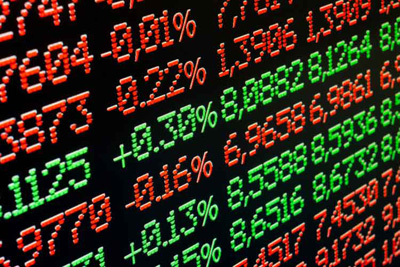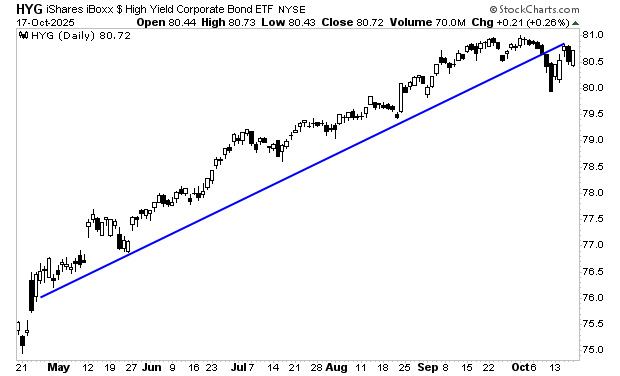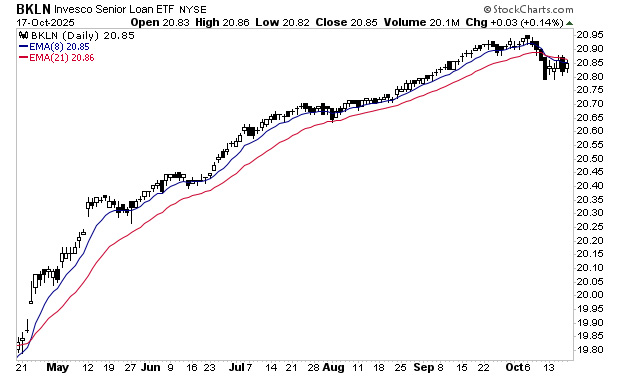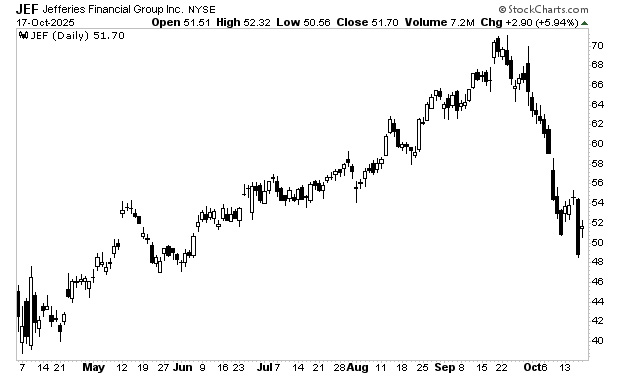Stocks Are Always the Last Asset to “Get It”
Graham Summers, MBA
 Stocks remain blissfully unaware of the problems in the debt/ credit markets. Stocks remain blissfully unaware of the problems in the debt/ credit markets.
While stocks get most of the attention from the media due to their greater volatility (greater volatility means a greater likelihood of producing significant gains quickly), the reality is that stocks are in fact the junior-most asset class in terms of capital structure.
What I mean by this is that if a company were to go bankrupt, stockholders would be THE last people to get paid after all the debt and creditors. As a result of this, the credit markets, NOT the stock markets are usually the first markets to react to changes in the economy.
Put simply: credit investors, particularly high yield credit investors (investors in “junk bonds”) are usually much more sophisticated and sensitive to potential risks because if things go wrong there is a high likelihood that they lose a LOT of money.
I mention this because the high yield credit ETF (HYG) has taken out its bull market trendline for the first time since the April lows. Even worse, HYG has failed to reclaim this line despite multiple interventions by the Trump administration.

This is a MAJOR warning that something BAD is brewing in the credit markets. We get confirmation of this from the Senior Loans (another credit instrument). Here again, the index has broken below both its bull market trendline. It’s also broken its 8-day exponential moving average (EMA) as well as its 21-EMA. This is a major signal that momentum has broken down and something BAD is coming.

Stocks remain in la la land about these risks. But they likely won’t for much longer. We’re already beginning to see this situation spread to major financial firms. Jeffries Financial Group (JEF) is one of the first firms to reveal it has exposure to these issues. JEF has over $60 billion in assets and its shares are currently imploding.

Put simply, something VERY bad is brewing in the banking system. And the big question for investors is whether these issues will trigger a stock market crash.
To answer this, I rely on a proprietary indicator that has triggered before every major meltdown in the last 50 years. This signal caught the 1987 crash, the Tech Crash, the Great Financial Crisis and more.
We detail this trigger, how it works, and what it’s saying about the markets today in How to Predict a Crash.
Normally we’d sell this report for $499, but in light of its recent warning, we’re making 99 copies available to the investing public.
To pick up one of the last copies…
CLICK HERE NOW!
Graham Summers, MBA
Chief Market Strategist
Phoenix Capital Research

Graham Summers, MBA is Chief Market Strategist for Phoenix Capital Research, an investment research firm based in the Washington DC-metro area.
Graham’s sterling track record and history of major predictions has made him one of the most sought after investment analysts in the world. He is one of only 20 experts in the world who are on record as predicting the 2008 Crash. Since then he has accurately predicted the EU Meltdown of 2011-2012 (locking in 73 consecutive winners during this period), Gold’s rise to $2,000 per ounce (and subsequent collapse), China’s market crash and more.
His views on business and investing has been featured in RollingStone magazine, The New York Post, CNN Money, Crain’s New York Business, the National Review, Thomson Reuters, the Fox Business, and more. His commentary is regularly featured on ZeroHedge and other online investment outlets.
gainspainscapital.com
| 

